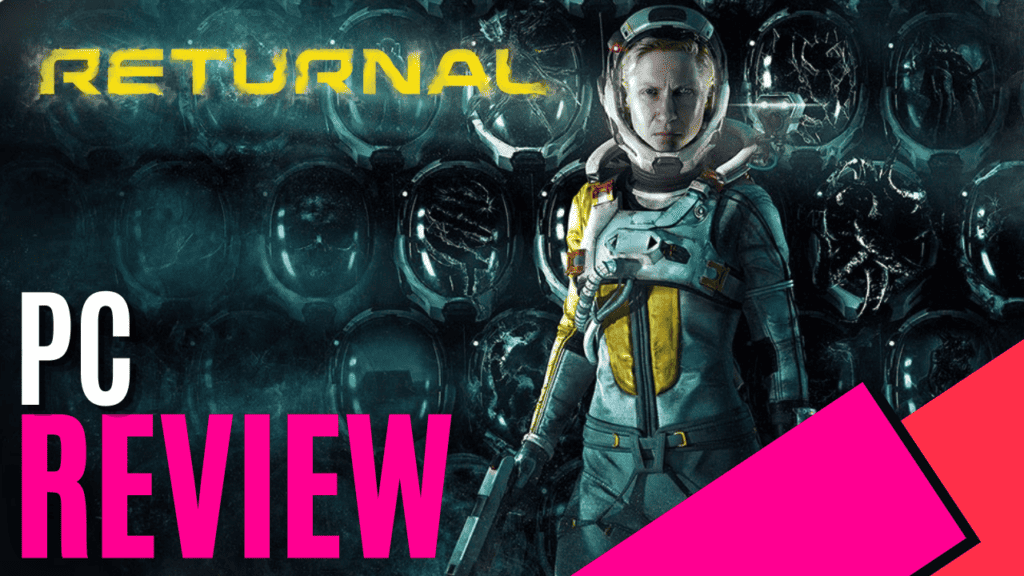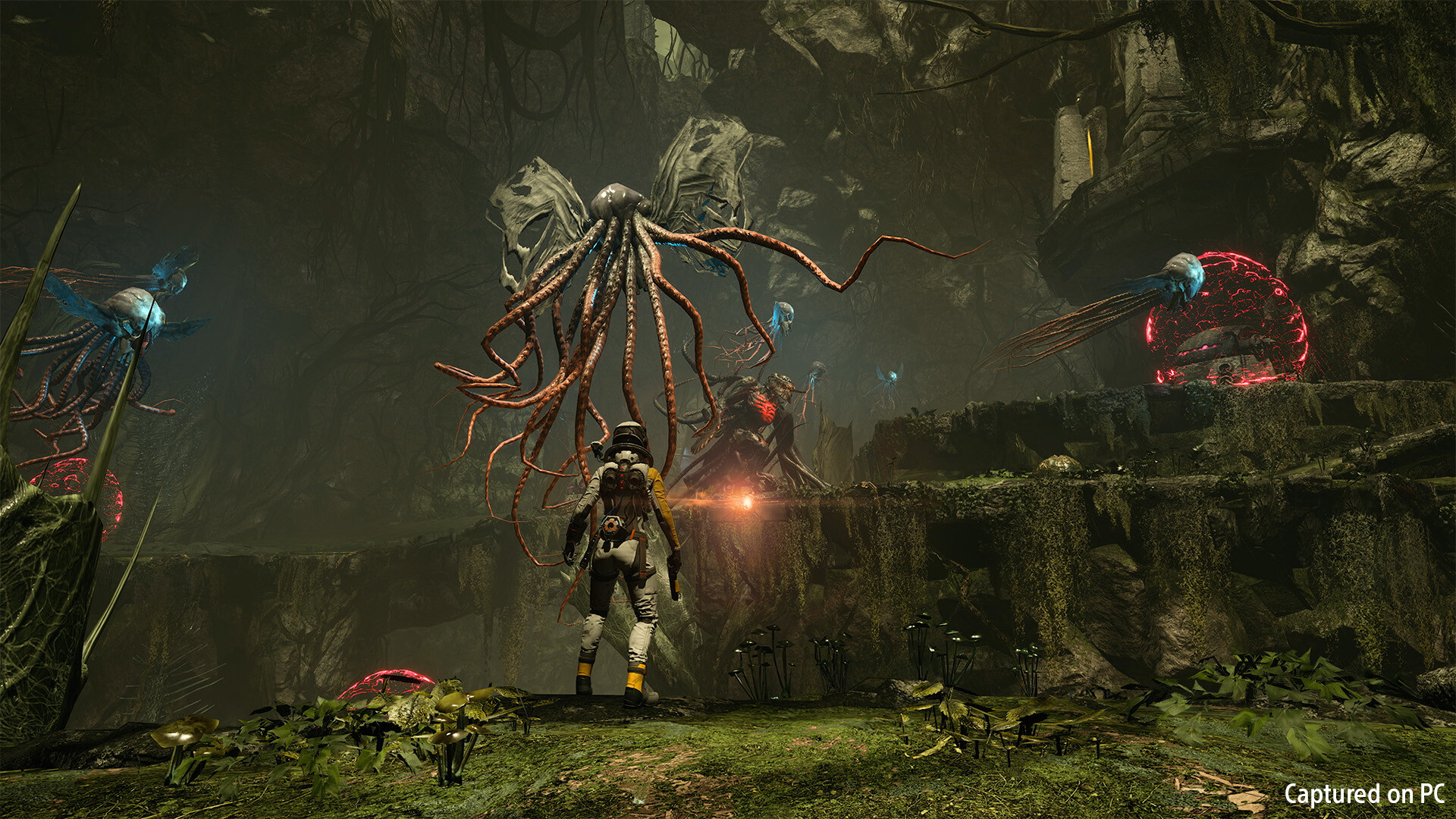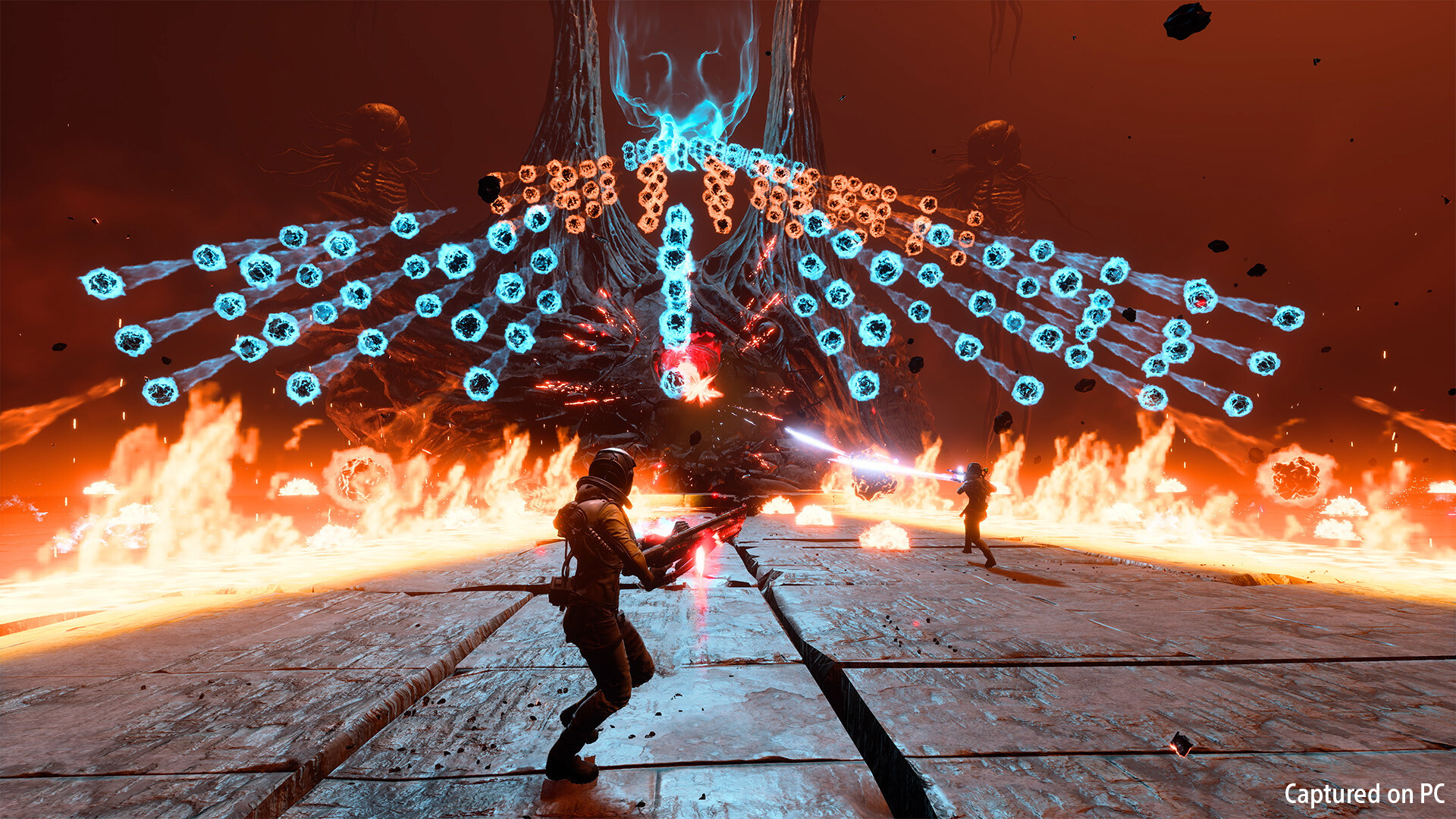
As you probably already know, Returnal has been out on PS5 for a couple of years now, and you can check out that review HERE. Now it’s released on PC, and we get to dive in once again, but this time, we get to see how it runs with a bit more power.
Let’s start by quickly stating my general PC specs so you understand what to expect from a similar system. I have an RTX 3080 10GB, Ryzen 9 5950x, and 32GB DDR4 3200MHz Ram, and I’m running the game off an SSD.
Straight off the bat, the game ran on epic which appears to be the maximum option for most of the settings, not including ray-tracing and any other video options like Nvidia’s DLSS or AMD’s FSR. Boasting great performance at 1080P throughout, I was averaging between 100 – 140 frames per second, depending on the situation, barely dipping below 100FPS, and bumping up and over 140+ quite often. It was a very smooth and satisfying experience.

A great feature of Returnal returns; is an in-game benchmark test. This allows you to fiddle with some settings and then run it so you can see how well it performs. I really appreciated this feature as it allows me to cipher through my settings if I need to adjust things, and I found through using the benchmark that Returnal on PC is a very GPU-intensive game, using a very minimal amount of CPU.
As mentioned before, there are options for ray-tracing, as was on PS5, but they’ve included the ability to support reflections, and this makes the game look so much nicer with a slight cost to performance. I found that when I enabled it at its highest setting, I dipped by about 20 frames lower than my standard performance without it.
Along with this major graphics option, there’s also Nvidia’s DLSS, NIS, and VRS or AMD’s FRS to help with any resolution or FPS boosts you might need. For those of us who are lucky enough to have ultra-wide monitors, the PC version of Returnal also naturally supports 21:9 and 32:9 aspect ratios, so you’ll have a whole lot more visibility.

There’s some great news for players who prefer controllers, and that is that there’s full controller support for both Playstation and Xbox controllers, which includes the use of PS5’s haptic feedback. All this comes with a decent amount of freedom to remap controls to find the perfect fit for you, but I preferred playing on a mouse and keyboard. It just felt natural and worked very well with Returnal.
For the audiophiles out there, there are plenty of options to finesse the sounds and get your perfect and preferred audio setup. You can adjust your general audio output options between 5.1, 7.1, Dolby Atmos, Aura 3D, and Resonance Audio, depending on your setup, before going into advanced options to fine-tune it that bit more, making use of dynamic range options and even ray-traced audio for better occlusion and obstruction accuracy.
Returnal is a great experience on PC and it’s always fun to see games originally only on one platform coming to more. It’s still a great pickup for anyone who was interested in it but couldn’t get a PS5, but you’ll want a decent PC to play it on.

The Good
- A great port
- Multitude of graphics options
- Full controller support
- Array of audio options








